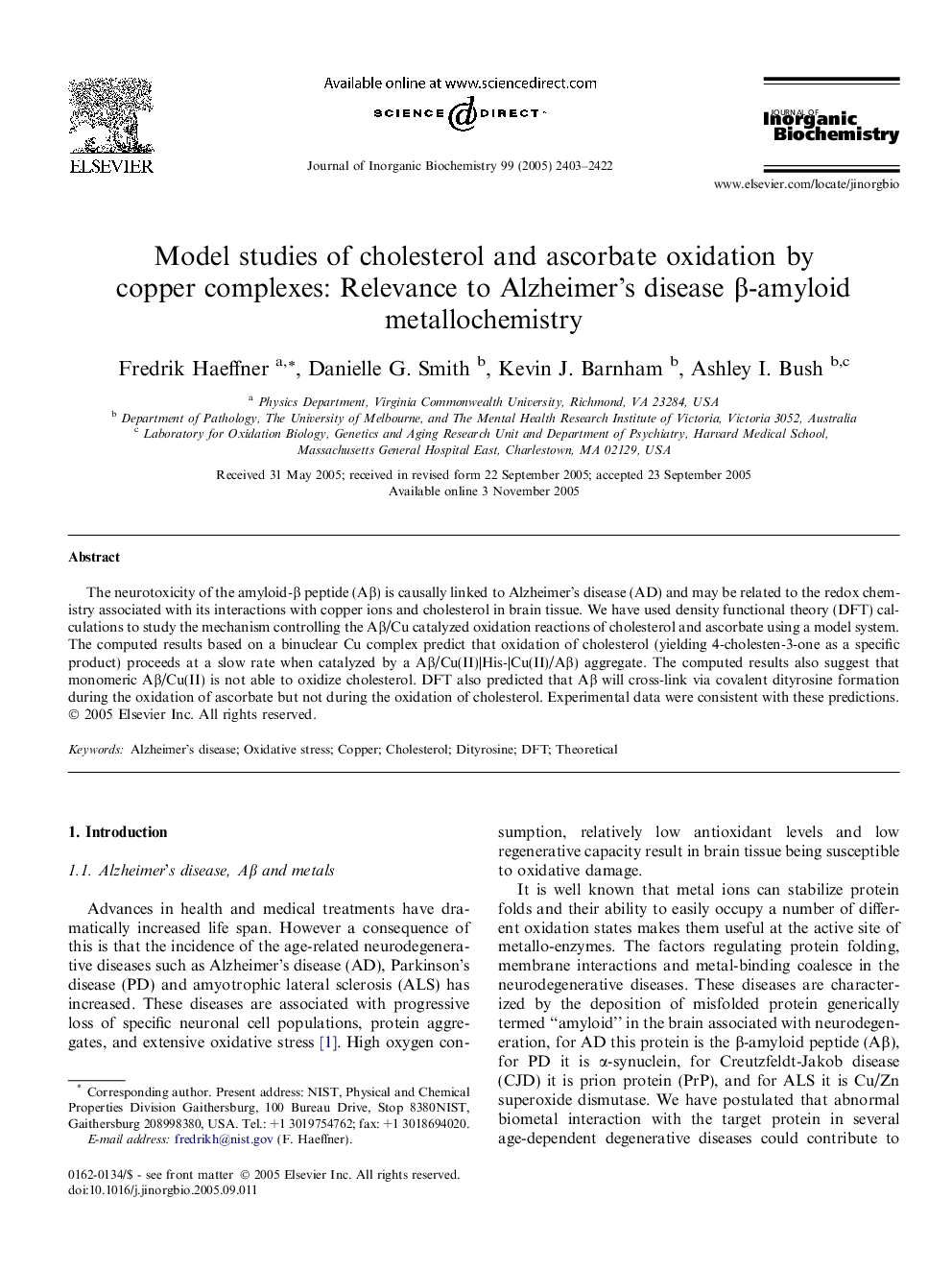| Article ID | Journal | Published Year | Pages | File Type |
|---|---|---|---|---|
| 1317457 | Journal of Inorganic Biochemistry | 2005 | 20 Pages |
The neurotoxicity of the amyloid-β peptide (Aβ) is causally linked to Alzheimer’s disease (AD) and may be related to the redox chemistry associated with its interactions with copper ions and cholesterol in brain tissue. We have used density functional theory (DFT) calculations to study the mechanism controlling the Aβ/Cu catalyzed oxidation reactions of cholesterol and ascorbate using a model system. The computed results based on a binuclear Cu complex predict that oxidation of cholesterol (yielding 4-cholesten-3-one as a specific product) proceeds at a slow rate when catalyzed by a Aβ/Cu(II)|His-|Cu(II)/Aβ) aggregate. The computed results also suggest that monomeric Aβ/Cu(II) is not able to oxidize cholesterol. DFT also predicted that Aβ will cross-link via covalent dityrosine formation during the oxidation of ascorbate but not during the oxidation of cholesterol. Experimental data were consistent with these predictions.
